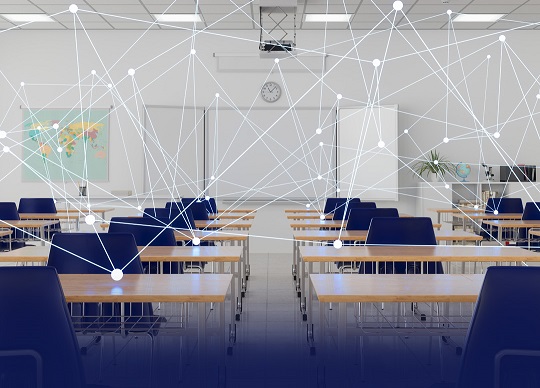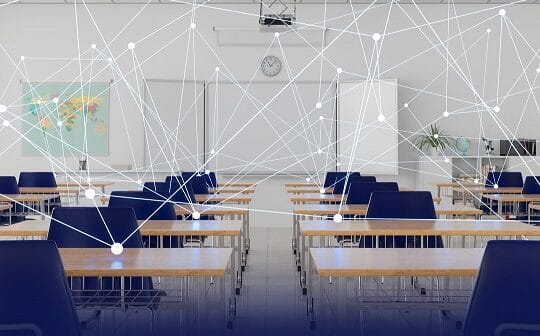
Wayne Arvidson, Global Director, Market Development and Strategy, Dell Technologies
With a focus on safety and the opportunity to greatly enhance operations and the quality of research and learning, educational institutions could see significant gains by implementing computer vision with real-time federated analytics.
Computer vision is revolutionizing many industries but is still making inroads into education. That’s not surprising, given the historically tight budgets for many educational institutions. As the technology advances and becomes more mainstream in the commercial world, colleges and universities are more likely to be the first adopters in the education realm.
With a camera infrastructure already in place on most education campuses, along with adequate district, campus and departmental networks, much of the infrastructure needed for computer vision is already in place.
What’s needed are scalable hyperconverged infrastructures (HCIs) that combine compute, networking, storage and software, enabling institutions to capture and analyze video, audio and other data at the edge to get real-time insights. A significant benefit to this approach to computer vision–powered analytics is that data can be ingested once, analyzed and then used in many different ways. To remove the risk in adopting this new technology, an all-in-one computer vision system is preconfigured, right-sized and validated to work with an institution’s applications.
Let’s look at computer vision’s impact on education-related outcomes across five key areas: safety and security, people experience, operational efficiencies, sustainability and enhancing revenue.
Increasing the safety and security of students, staff, facilities and campuses
Safety and security are key requirements in all education institutions. One of the most common uses of computer vision today is to monitor premises, which includes the perimeter and interior of buildings. That data can be used to streamline biometric access control systems or automate incident control to protect occupants and deny entry to unauthorized persons. AI and machine learning analysis of video streams, still photos and audio feeds assist security personnel with real-time situational awareness for things like finding missing persons and identifying people who should not be in a particular location, as well as providing predictive occupancy to ensure that spaces remain under capacity limits to meet fire codes and social distancing measures.
Equally important is the safety of individuals from contaminants. Camera data along with air-quality sensors can feed data into a computer vision system to detect changes in the environment from hazardous materials or airborne chemicals. Any space can be monitored for air quality and ventilation to protect personal health and wellbeing.
Another use is to help individuals move about safely between buildings on campus and enhance real-time situational awareness for emergency personnel. For example, consider a student leaving the library at night. The student uses an app to notify campus security that they’re leaving the library and heading to their dorm room. As cameras detect the student in motion, lights turn on to illuminate their path to the resident hall with security staff monitoring their progress. A computer vision system can also integrate into a local city system to enable faster response times by law enforcement and first responders.
Realizing greater operational efficiencies through real-time actionable intelligence also ups the people experience
Enhancing the people experience often also delivers operational efficiencies—streamlining a service benefits the business and the people who consume that service.
On a higher education campus, getting people to their destination with minimal effort on their part is accomplished through services like augmented-reality–based wayfinding, where digital signage and/or apps guide people to parking spots, buildings, offices and classrooms. Classroom and auditoriums can be configured for hoteling, which detects when an instructor walks into the room and automatically adjusts lighting, air temperature and the height of the podium per the instructor’s preferences.
Queue management is also made more efficient by computer vision. Computer vision insights are used to predict busy times at the bookstore, for example, by combining visual data with historical sales data. Potential wait times in the checkout line (or places like the registration office) can be alleviated through dynamic staffing, in which employees are pre-scheduled or shifted in real time to meet demand. In the future, students will be able to purchase books and supplies using touchless or frictionless technology, grabbing what they need and being checked out automatically as they leave the store.
Higher education campuses are like mini cities, many with their own power generation plants and water heating and cooling systems. A campus can operate like a smart city, using computer vision to control power consumption and water usage, as well as per-building heating, ventilation and air conditioning (HVAC). Based on historical usage patterns, outdoor smart lighting can be configured to automatically power off or use downlighting during daylight hours and light up the same areas after dark.
Data analytics derived through computer vision is also being used to help prevent students from dropping out of school. A major K-12 school district in the United States uses real-time federated analytics to combine visual factors with data from social media posts, academics and other sources to classify types of at-risk students. Educators and counselors then use these insights along with their personal observations to offer student counseling and other resources to help them on their academic journey.
How schools can reduce environmental impacts through sustainability measures via computer vision
Schools at all levels tend to be environmental stewards, looking to build a healthy future for their students, personnel and surrounding communities. For many administrators, running an eco-friendly school system and reducing their overall carbon footprint is often a priority and likely will be well into the future.
So how does computer vision help?
Occupancy data generated by cameras can be used by building energy management systems to automatically adjust HVAC conditions in real time to ensure the proper conditions for occupied spaces while conserving resources in spaces that are unused.
Data from cameras monitoring parking lots is integrated into digital signage systems and wayfinding to help to direct traffic to available parking spaces more efficiently, reducing emissions. The same principle applies to shuttles moving people to and from events at university stadiums which will become even more fine-tuned as the use of autonomous driving vehicles with regulated speed and acceleration become the norm.
Generating revenue through computer vision in higher education
Colleges and universities, and even some private K-12 schools, compete to attract a certain caliber of students. While an institution with computer vision in place appeals to parents due to increased safety and security, recruiters can use computer vision for enhanced virtual tours and as a general draw that makes the campus a destination for students.
For example, research universities using computer vision’s real-time federated analytics offer students the opportunity to learn about and use the same tools as commercial industries, such as big pharma and healthcare, gaining valuable experience while pursuing a degree. Departments may be able to acquire funding, such as research & development grants, for computer vision through public entities and private corporations.
In the United States, college sports and entertainment events are a significant source of revenue. Using computer vision to increase the safety of stadiums and the people who use them, and make the fan experience easier and more enjoyable, can increase ticket and concession sales, boosting the revenue of those venues.
Having the capability to generate data insights at the right speed and velocity to make time-sensitive decisions can only improve overall safety, but it also enriches the experience of the educational community, increases operational efficiencies, improves sustainability and enhances revenue generation. Consider where you can begin incorporating computer vision into your school to improve outcomes for your students, educators, staff and institution.
Learn more about how computer vision is positively impacting other industries:
- The Future Is Computer Vision – Real-Time Situational Awareness, Better Quality and Faster Insights
- Computer Vision Is Transforming the Transportation Industry, Making It Safer, More Efficient and Improving the Bottom Line
- How Computer Vision is revolutionizing the Manufacturing Supply Chain
- How the Sports and Entertainment Industry Is Reinventing the Fan Experience and Enhancing Revenues with Computer Vision
- How the Retail Industry Can Improve the Customer Experience, Increase Safety and Maximize Margins Through Computer Vision and Artificial Intelligence





